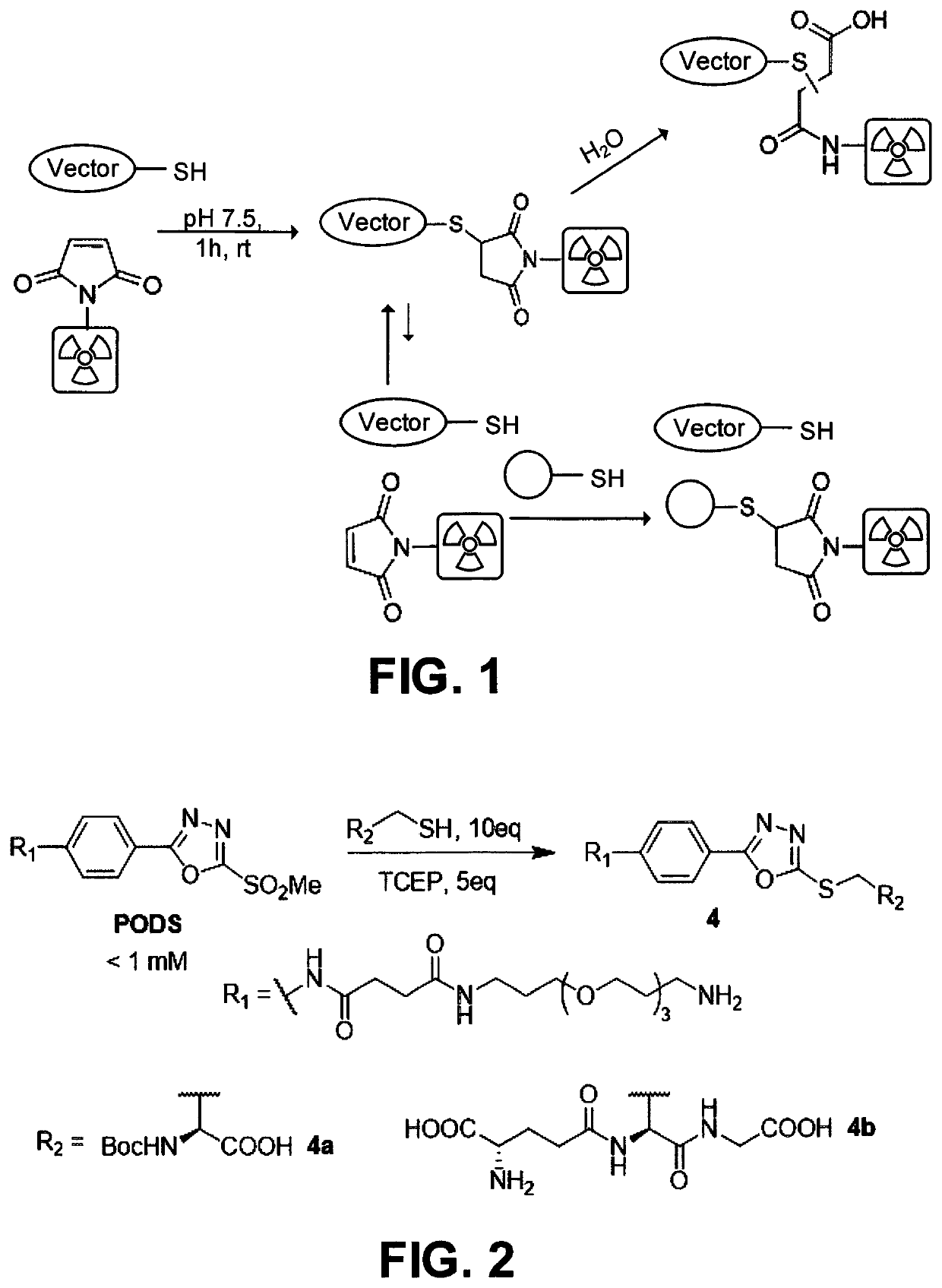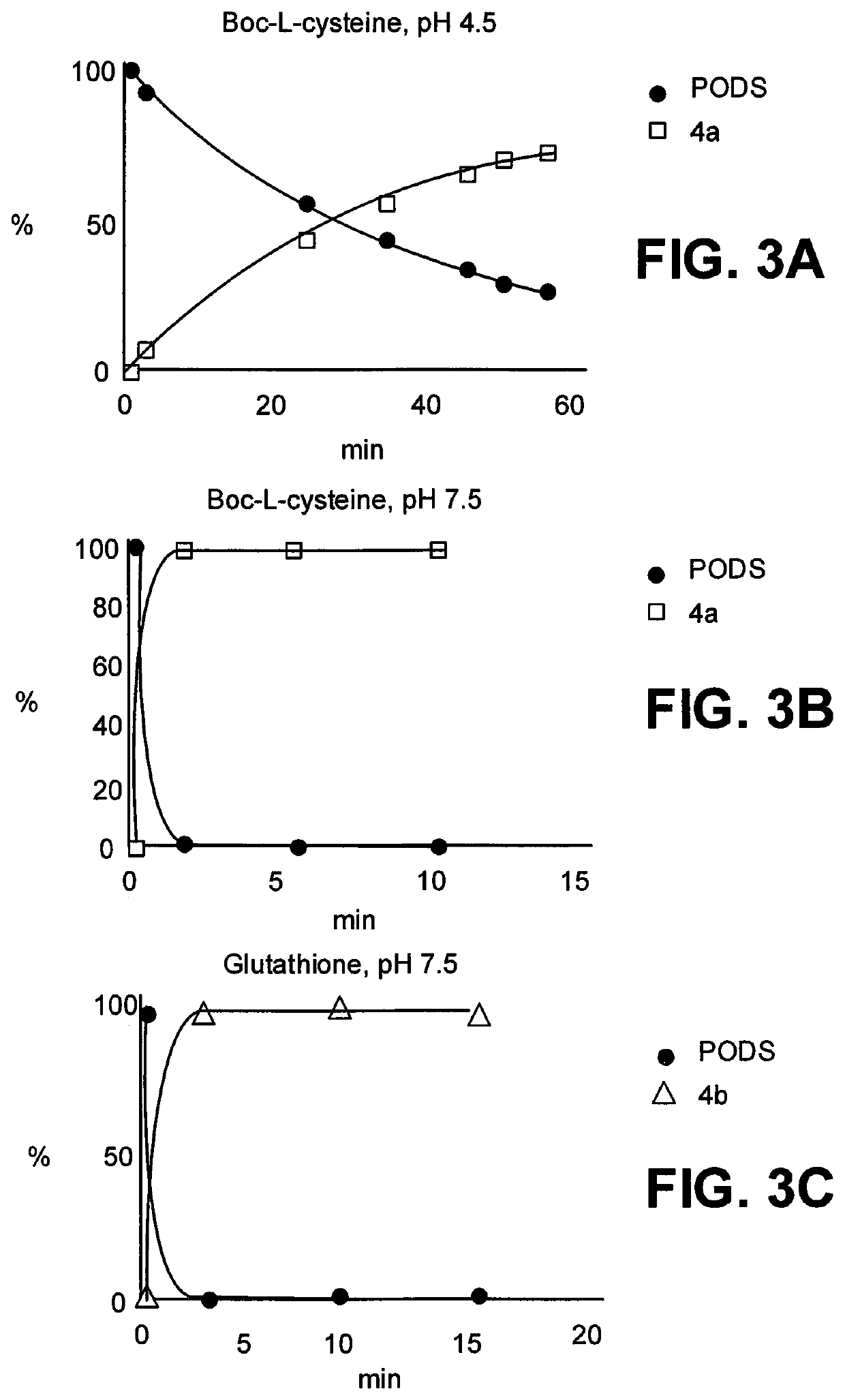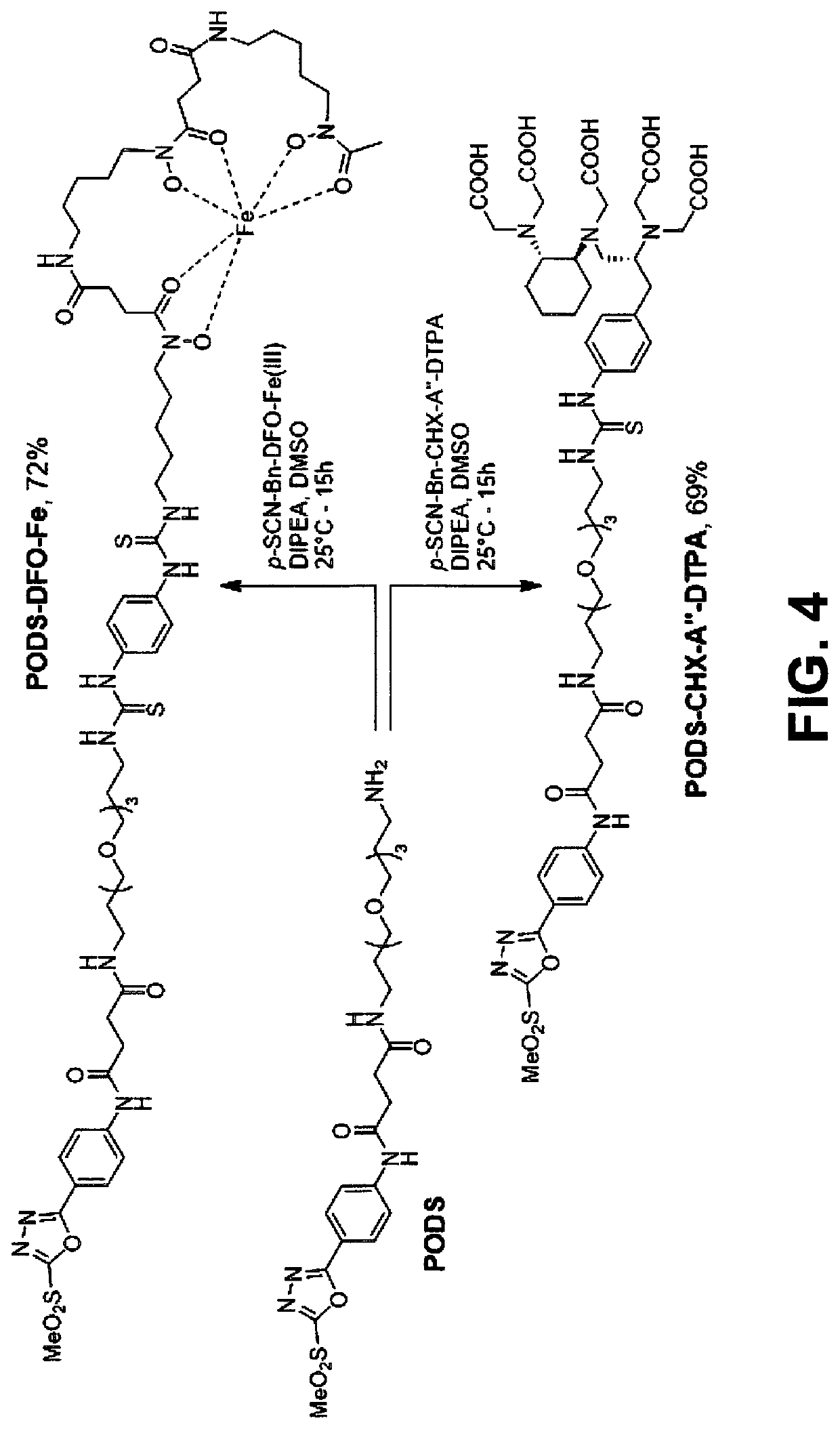Reagent for site-selective bioconjugation of proteins or antibodies
a protein or antibody technology, applied in the field of site-selective biological radiolabels, can solve the problems of high reproducibility of the approach to bioconjugation, large problem, and large heterogeneous conjugates
- Summary
- Abstract
- Description
- Claims
- Application Information
AI Technical Summary
Benefits of technology
Problems solved by technology
Method used
Image
Examples
Embodiment Construction
[0034]This disclosure describes the synthesis of two thiol-reactive bifunctional chelators for 89Zr and 177Lu based on a new, easy-to-make phenyloxadiazolyl methylsulfone reagent: PODS.
[0035]
[0036]In one embodiment, PODS derivative is used that has a structure given by:
[0037]
wherein: R1 is a metal chelator, a fluorophore or a click-chemistry synthon; R is a methyl, ethyl or propyl; x is 1 or 2; y is 2 or 3 and z is 1 or 2.
[0038]Radioimmunoconjugates created using these novel bifunctional chelators displayed higher in vitro stability than their maleimide-derived cousins. More importantly, Positron emission tomography (PET) imaging in murine models of cancer revealed that a 89Zr-labeled radioimmunoconjugate created using a PODS-bearing bifunctional chelator produced significantly lower uptake in non-target tissues than its analogous maleimide-based counterpart.
[0039]The PODS reagent can be appended by numerous cargo through its terminal primary amine, allowing conjugation of that carg...
PUM
| Property | Measurement | Unit |
|---|---|---|
| pH | aaaaa | aaaaa |
| temperature | aaaaa | aaaaa |
| temperature | aaaaa | aaaaa |
Abstract
Description
Claims
Application Information
 Login to View More
Login to View More - R&D
- Intellectual Property
- Life Sciences
- Materials
- Tech Scout
- Unparalleled Data Quality
- Higher Quality Content
- 60% Fewer Hallucinations
Browse by: Latest US Patents, China's latest patents, Technical Efficacy Thesaurus, Application Domain, Technology Topic, Popular Technical Reports.
© 2025 PatSnap. All rights reserved.Legal|Privacy policy|Modern Slavery Act Transparency Statement|Sitemap|About US| Contact US: help@patsnap.com



